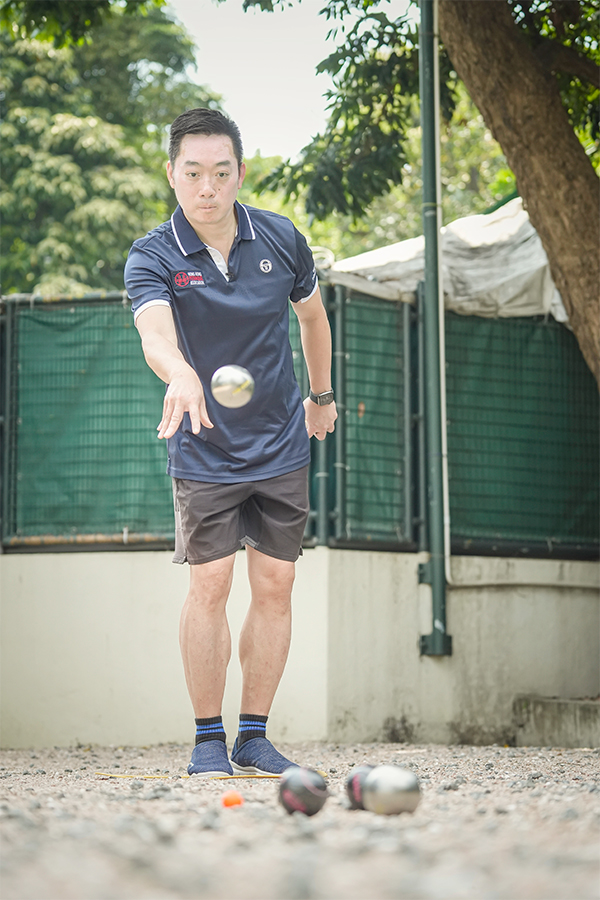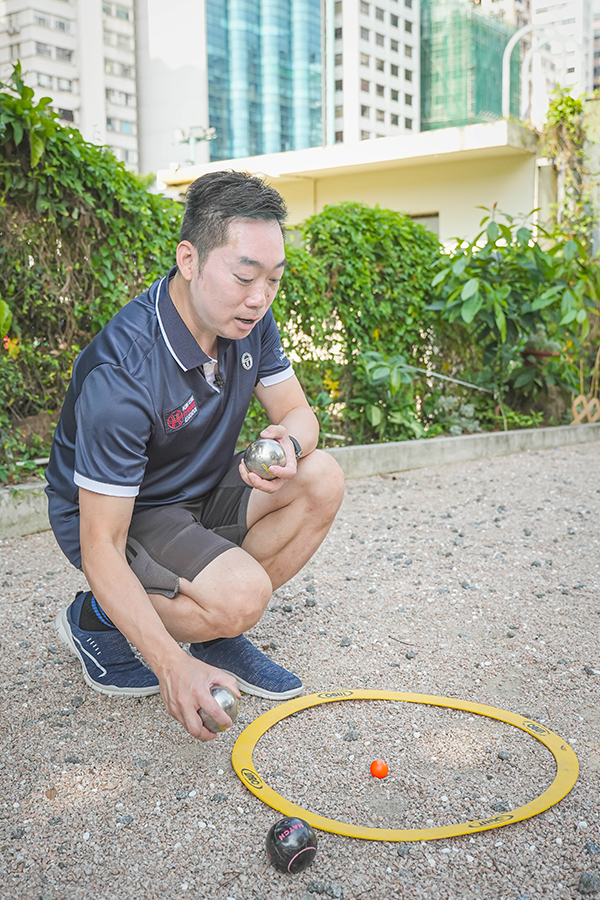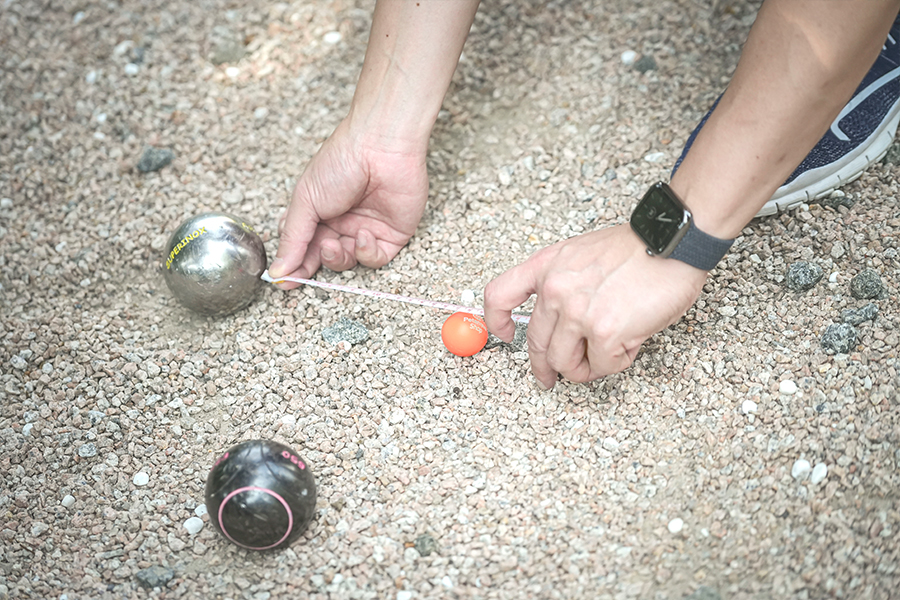Precious lessons in life from the sport of pétanque
 Consultant in the Department of Orthopaedics & Traumatology (O&T) at Caritas Medical Centre Dr Ben Wong plays as shooter in the game of pétanque – a century-old game that originated in France. In a pétanque court, he threw a boule towards the target ball jack and knocked the opponent’s boule further away. “Sometimes you think you are going to win but you can lose because of a deterioration in the weather. Do not be too eager to win but try to do your very best in the match – that is the best way to keep a positive attitude,” he says.
Consultant in the Department of Orthopaedics & Traumatology (O&T) at Caritas Medical Centre Dr Ben Wong plays as shooter in the game of pétanque – a century-old game that originated in France. In a pétanque court, he threw a boule towards the target ball jack and knocked the opponent’s boule further away. “Sometimes you think you are going to win but you can lose because of a deterioration in the weather. Do not be too eager to win but try to do your very best in the match – that is the best way to keep a positive attitude,” he says.
Ben was a keen bowler for more than 10 years but developed an interest in lawn bowls and pétanque when the bowling league was suspended during the COVID-19 epidemic. Now, he plays the two sports seven days a week. “I get to work early and on weekdays after work, I play lawn bowls, and at the weekends, I play pétanque. I spend all my personal time with my family and playing sports,” he says with a laugh.
 When he takes off his white work coat, Ben is the captain on the pétanque court and sees parallels between his professional life and his sporting pursuits. “Clinical duty and pétanque are both related to teamwork,” he observes. “What I have to do is to understand the characteristics of each person and provide them with suitable tasks that can utilise their strengths.” Pétanque involves high levels of concentration and patience as well as taking consideration of the game plan, and Ben believes that being an orthopaedic surgeon helps improve his game. “For instance, I know what to do with my shoulder and arm to keep my movements steady so as to increase my shooting accuracy, and how to exert force on the feet and swing my waist to avoid injuries,” he says.
When he takes off his white work coat, Ben is the captain on the pétanque court and sees parallels between his professional life and his sporting pursuits. “Clinical duty and pétanque are both related to teamwork,” he observes. “What I have to do is to understand the characteristics of each person and provide them with suitable tasks that can utilise their strengths.” Pétanque involves high levels of concentration and patience as well as taking consideration of the game plan, and Ben believes that being an orthopaedic surgeon helps improve his game. “For instance, I know what to do with my shoulder and arm to keep my movements steady so as to increase my shooting accuracy, and how to exert force on the feet and swing my waist to avoid injuries,” he says.
Know your opponents to develop on-site strategy
Pétanque can be played on gravel or grass but matches are usually held on gravel courts. The size of the gravel stones creates different degrees of friction when the boule touches down. If it rains, wet gravel is a disadvantage to players. The distribution of gravel is varied in different courts. All means they need a high level of adaptability. “We observe the on-site performance of opponents and bring designated boules for pointer and shooter,” he says. “Our strategy is subject to the weaknesses and strengths of our opponents.” Ben has received overseas training in pétanque and played in friendly matches that taught him important lessons. “No doubt you will be frustrated when you lose a game, but it is important to maintain a balanced mindset,” he reflects. “Do not be too eager to win. Practise more if you find you have a low hit rate. Try your best in every single match.”
Ben has received overseas training in pétanque and played in friendly matches that taught him important lessons. “No doubt you will be frustrated when you lose a game, but it is important to maintain a balanced mindset,” he reflects. “Do not be too eager to win. Practise more if you find you have a low hit rate. Try your best in every single match.”
Pétanque is suitable for people of all ages and can be played almost anywhere. But it is still at a preliminary stage in Hong Kong. Ben has successfully encouraged his friend to play pétanque and wants to promote the sport in primary and secondary schools and help them build pétanque courts so that more young people can learn to take up the sport.

Rules:
- Pétanque is played by two teams, with a maximum three players per term
- Throw the target ball jack prior the match. Throw the boule towards jack as close as possible
- The boule that closest to jack scores one point. The term accumulates 13 points is the winner
Interview video